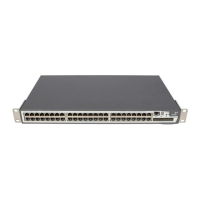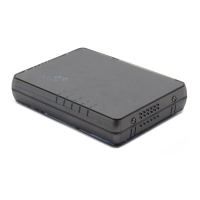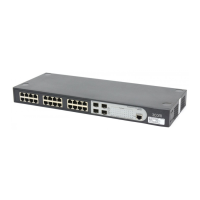192 CHAPTER 6: USING ROUTING PROTOCOL COMMANDS
display ospf interface Syntax
display ospf [
process-id
] interface [
interface-type
port-number
]
View
All Views
Parameters
process-id
Enter the process ID of OSPF, ranging from 1 to 65535. The command
is applied to all current OSPF processes if you do not specify a process ID.
interface-type
Enter the interface type.
port-number
Enter the port number.
Description
Use the display ospf interface command to view OSPF interface information
for a specified port, or for all ports.
The information displayed includes OSPF configuration and running state.
Example
To display OSPF interface information, enter the following:
<SW5500>display ospf interface vlan-interface 1
OSPF Process 1 with Router ID 1.1.1.1
The information displays in the following format:
Interfaces
Interface: 10.110.10.2 (Vlan-interface1)
Cost: 1 State: BackupDR Type: Broadcast
Priority: 1
Designated Router: 10.110.10.1
Backup Designated Router: 10.110.10.2
Timers: Hello 10, Dead 40, Poll 0, Retransmit 5, Transmit Delay 1
LS REQ: empty request Link state request packet: empty request
LS REQ: wrong request Link state request packet: erroneous request
LS UPD: neighbor state low Link state update packet: asynchronous neighbor state
LS UPD: newer self-generate LSA Link state update packet: newer LSA generated by
itself
LS UPD: LSA checksum wrong Link state update packet: LSA checksum error
LS UPD:received less recent LSA Link state update packet: received less recent LSA
LS UPD: unknown LSA type Link state update packet: unknown LSA type
OSPF routing: next hop not exist Next hop of OSPF routing does not exist
DD: MTU option mismatch MTU option of DD packet is mismatched
ROUTETYPE: wrong type value Route type: the value of the type is wrong
Table 29 Description of information generated by the display ospf error command
Field Description

